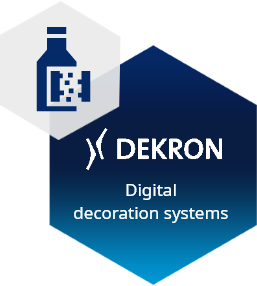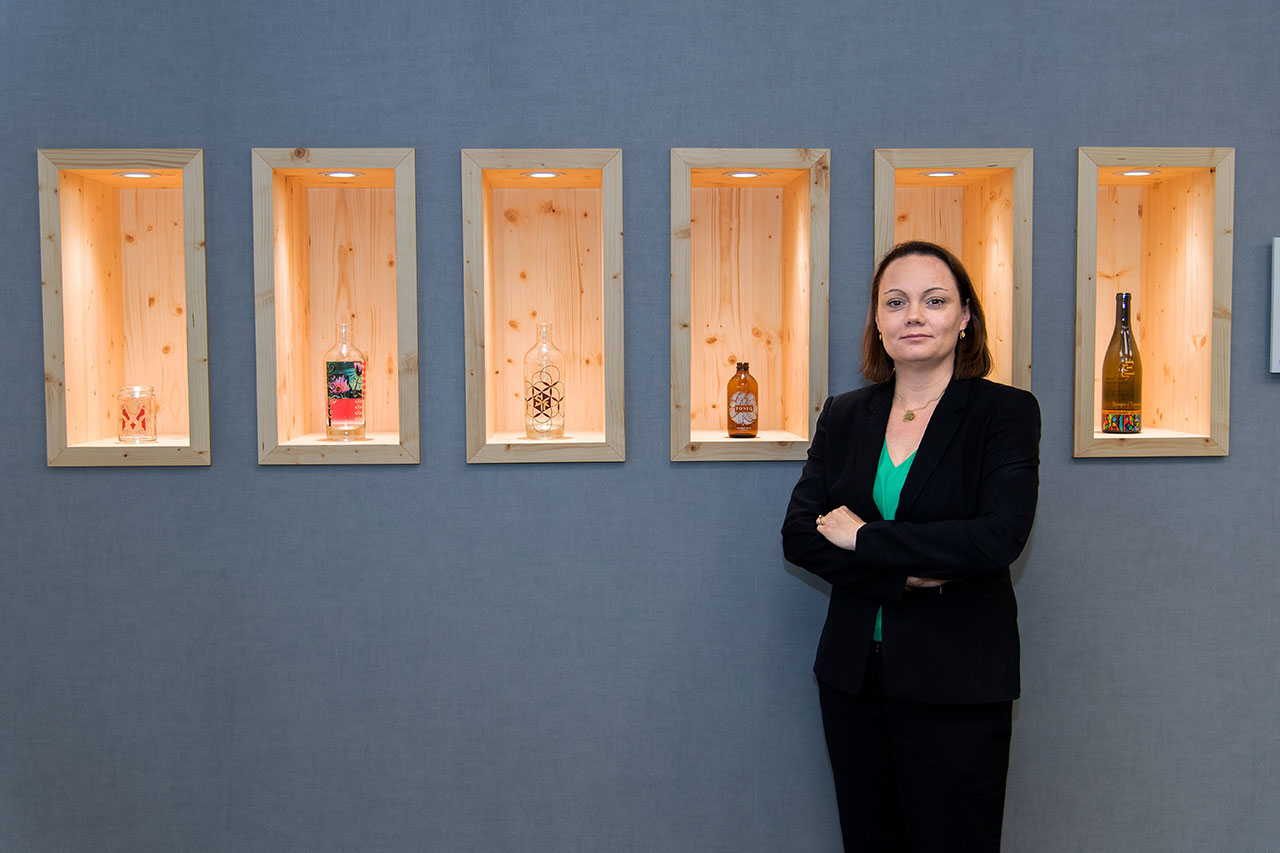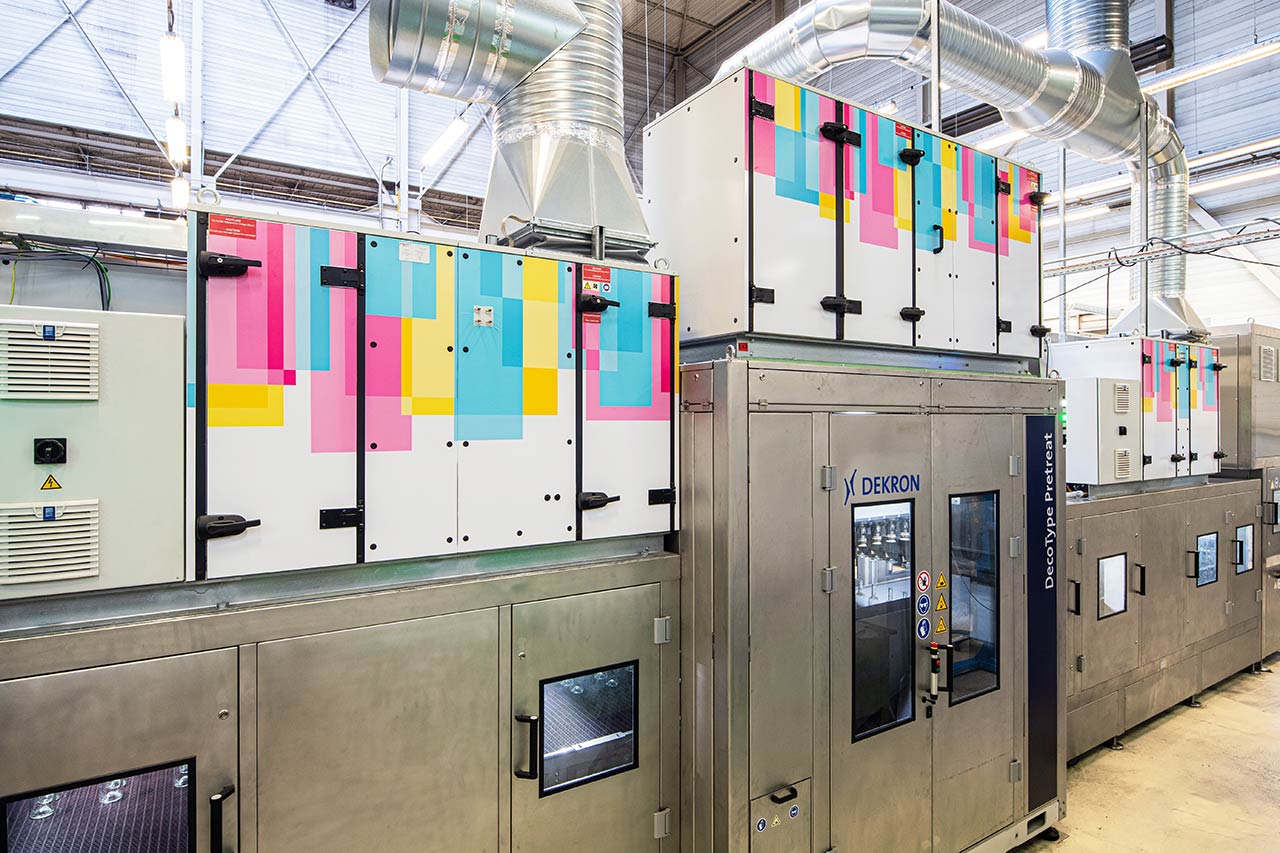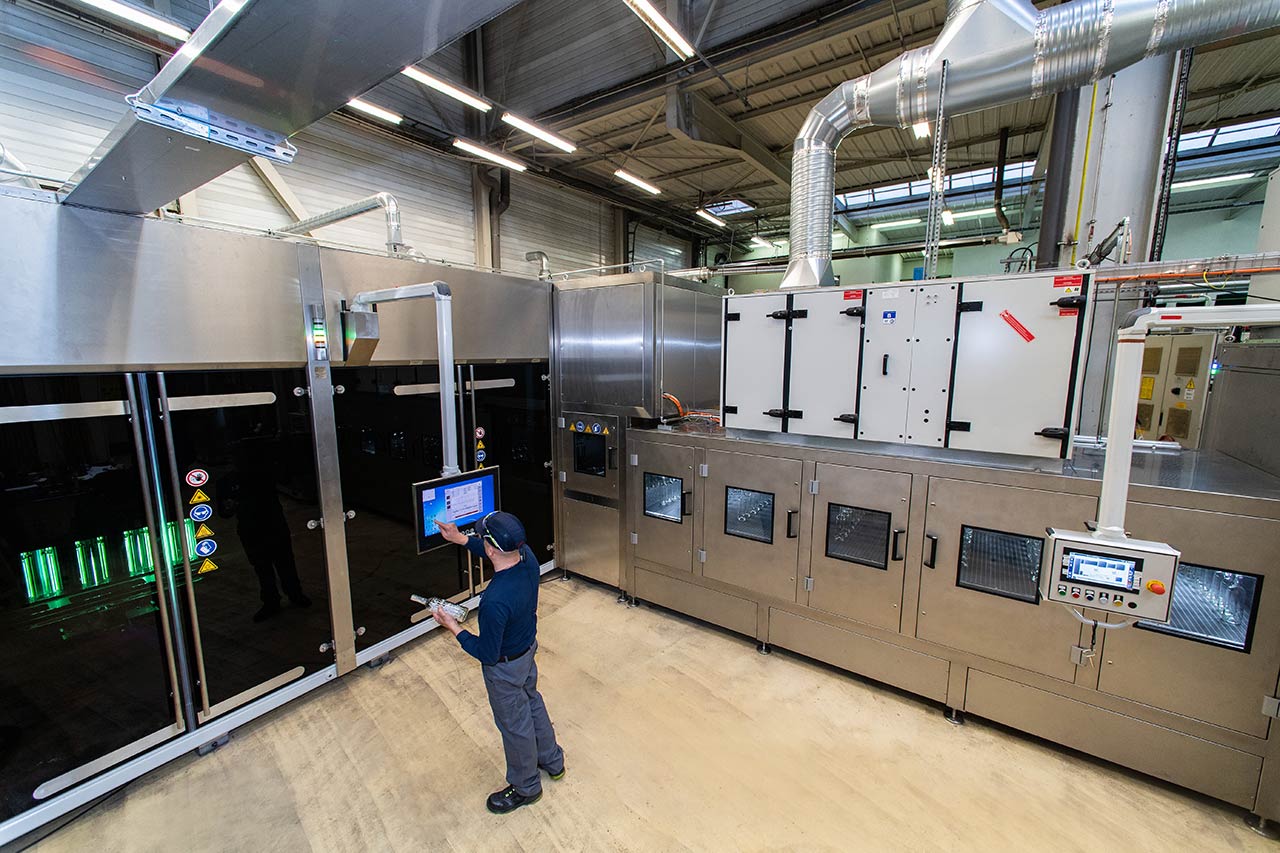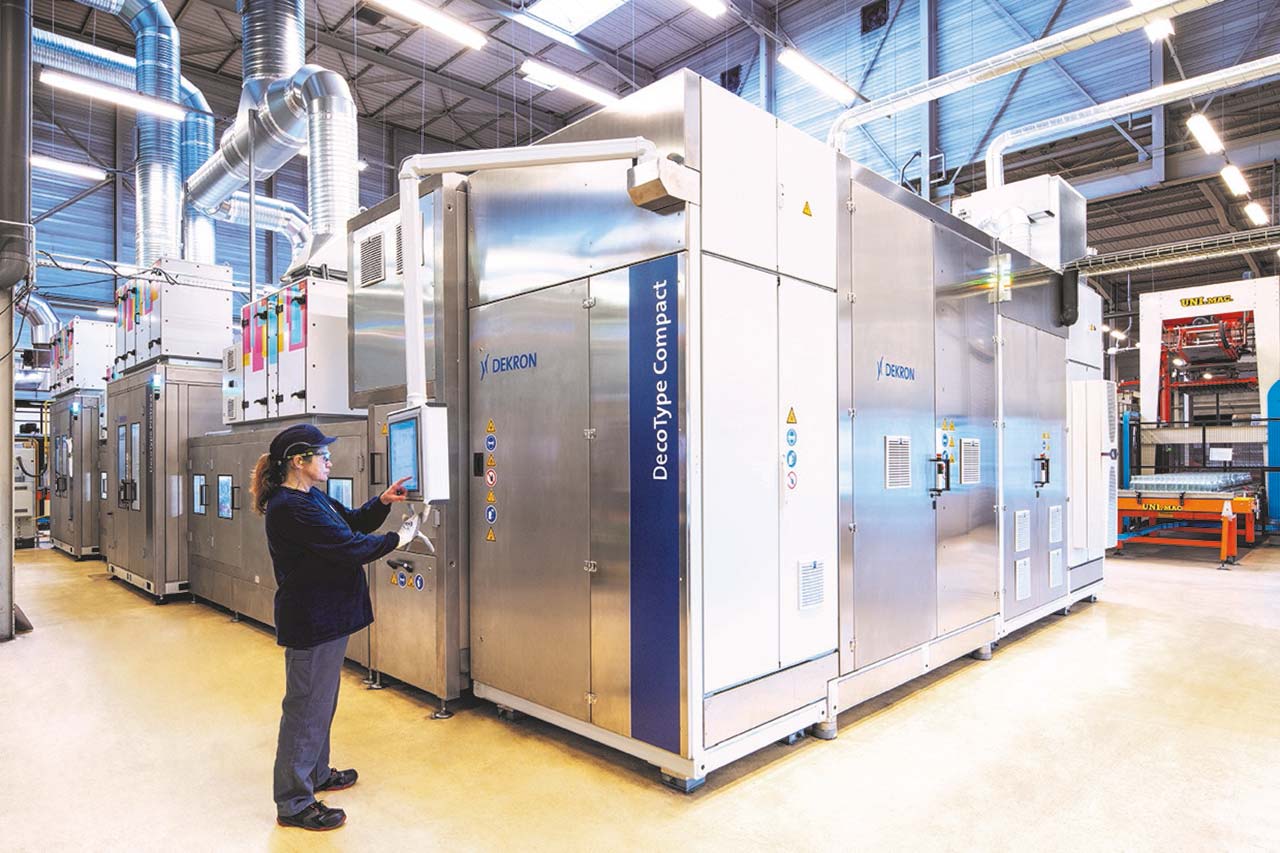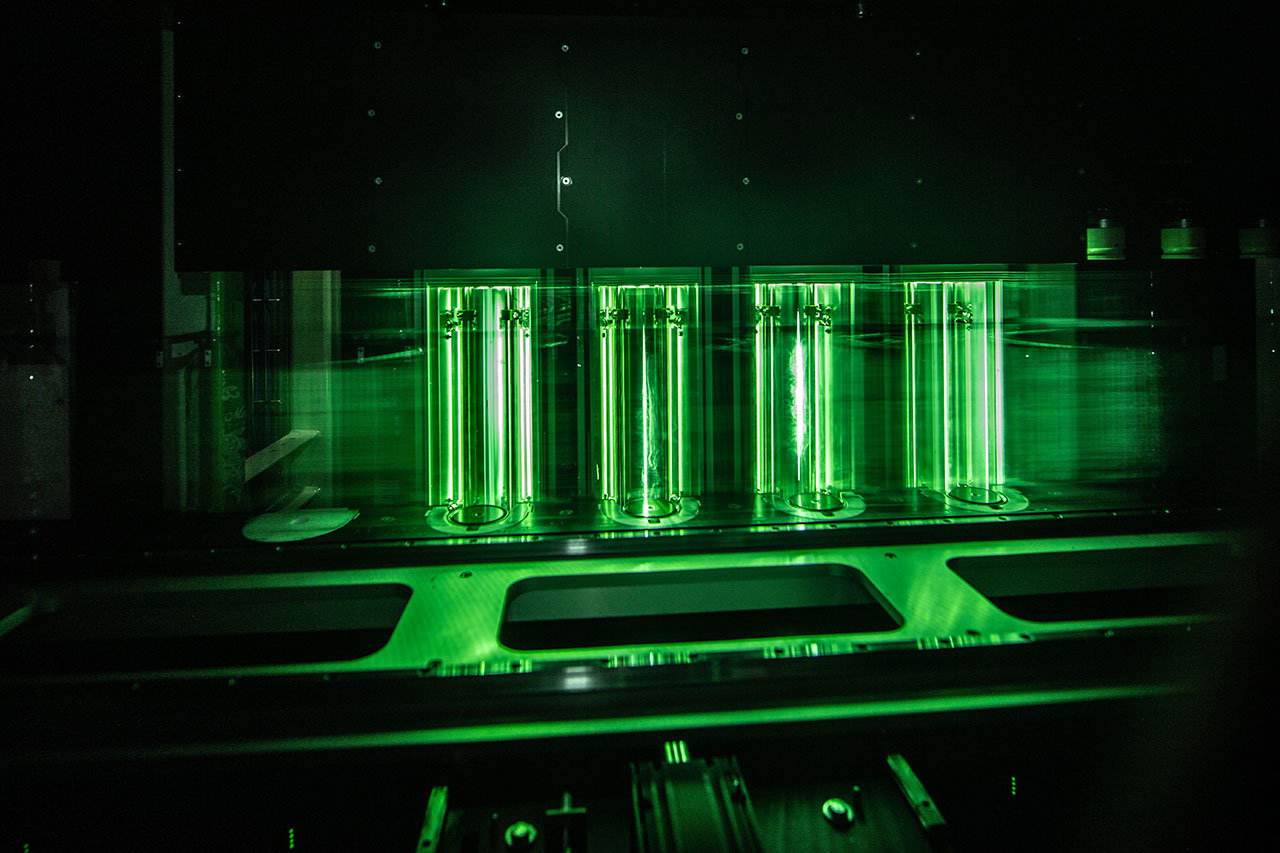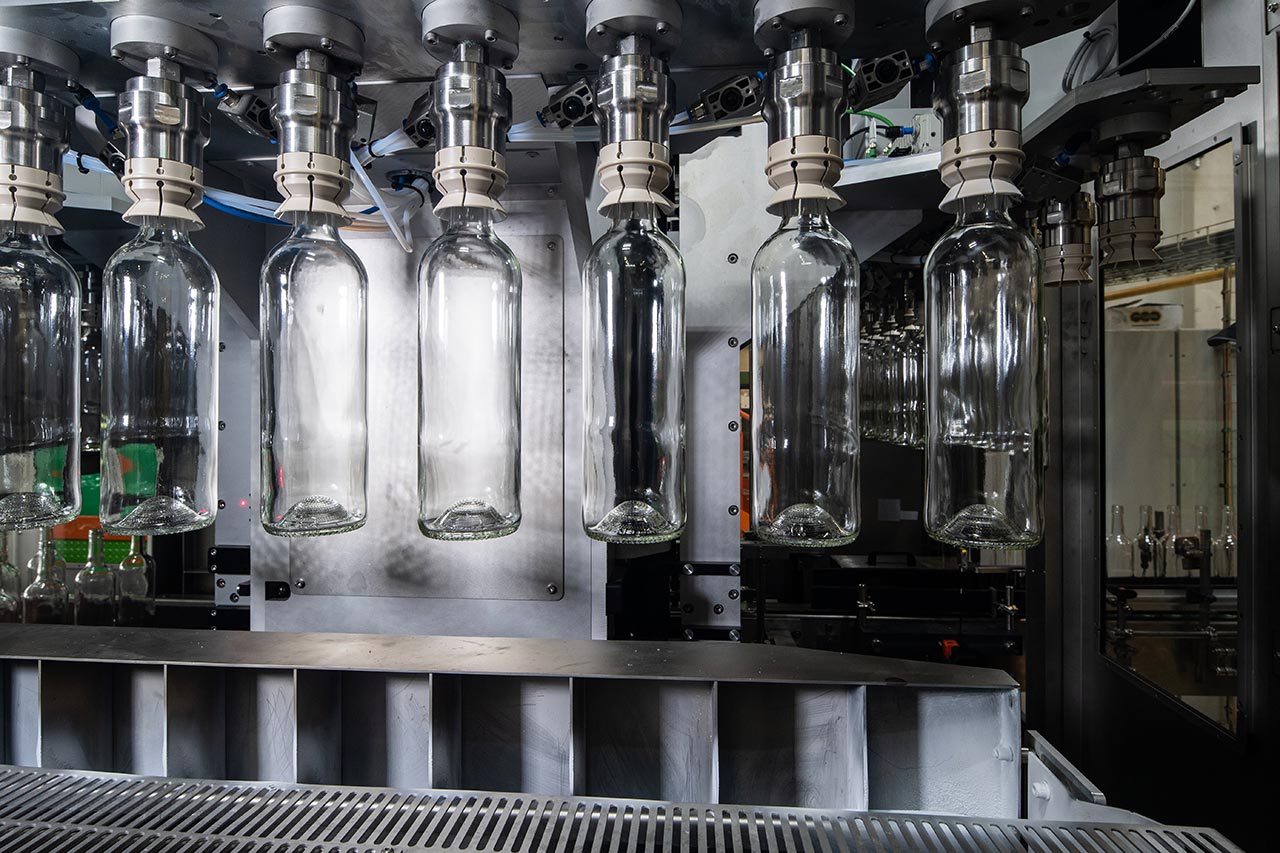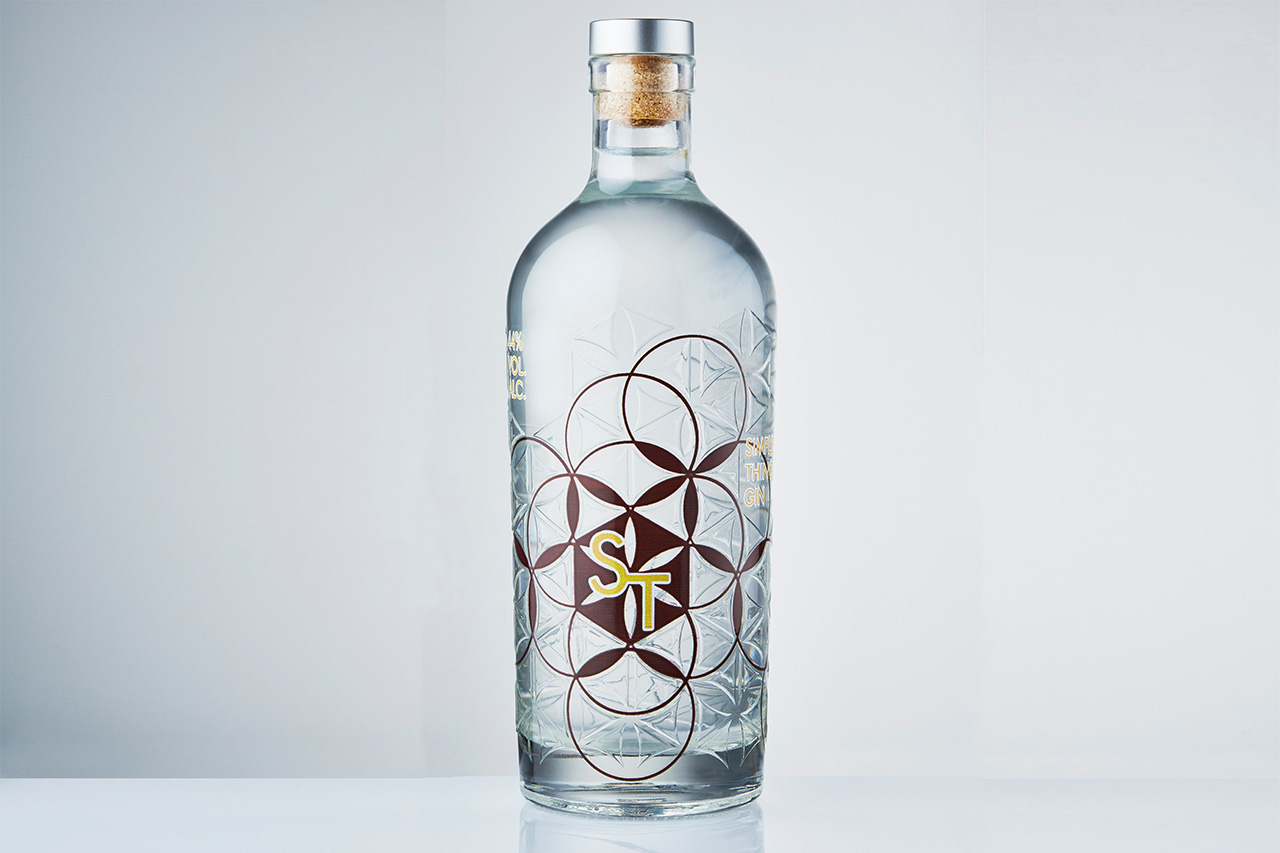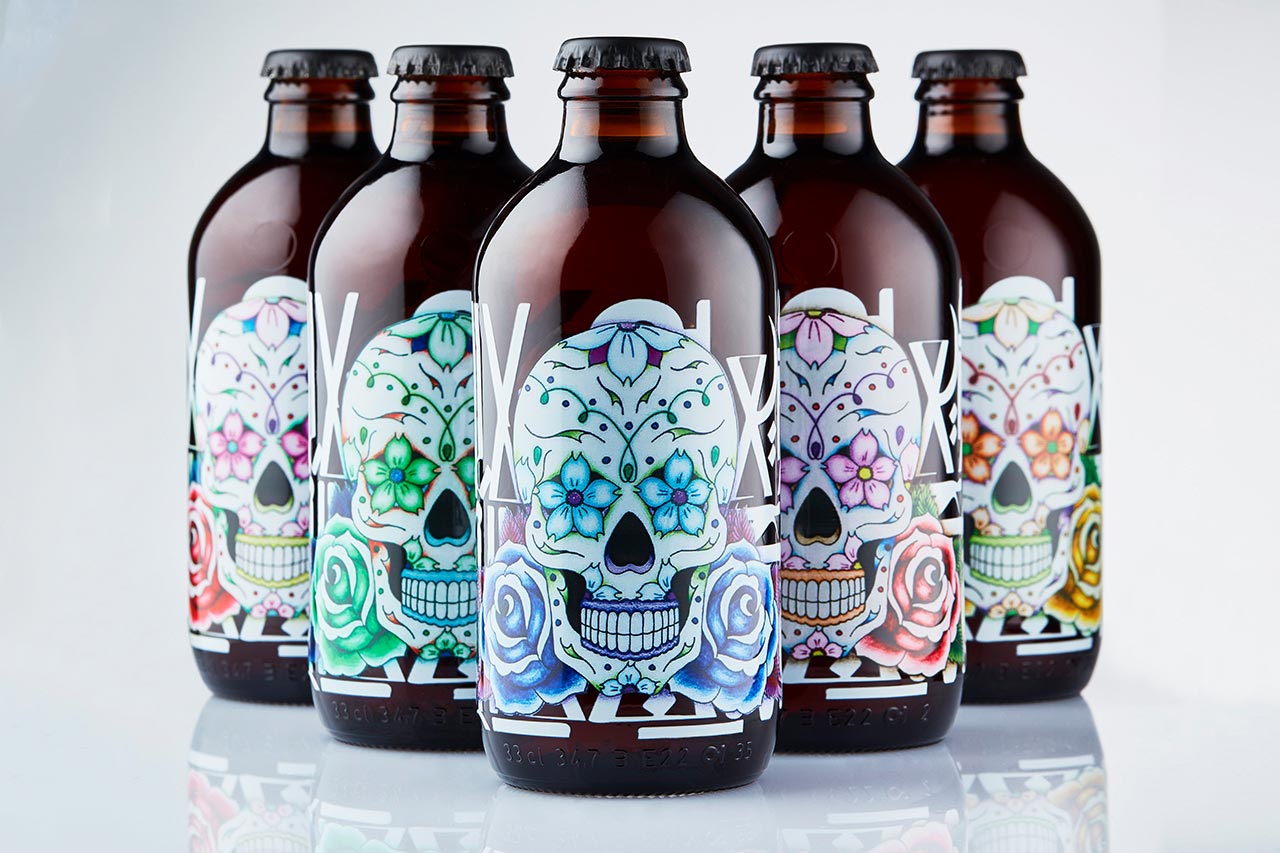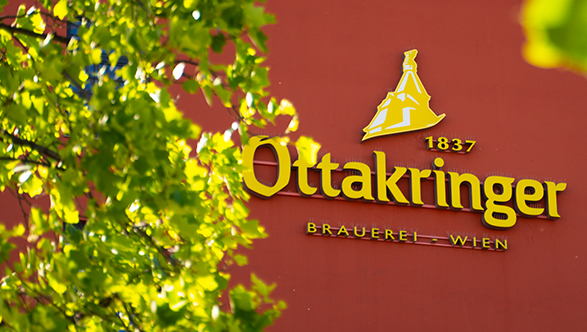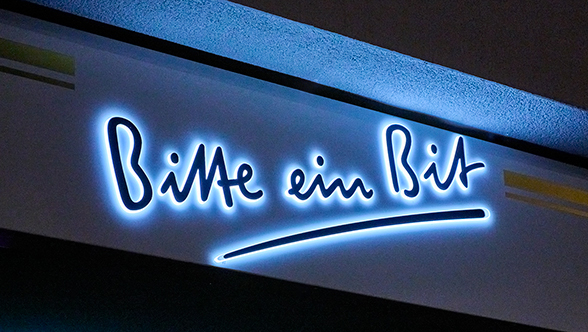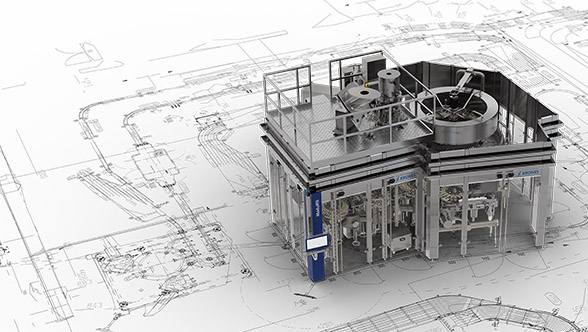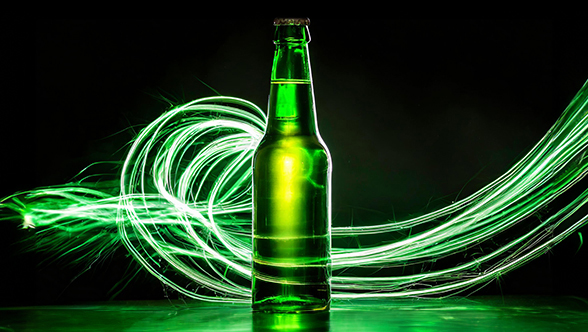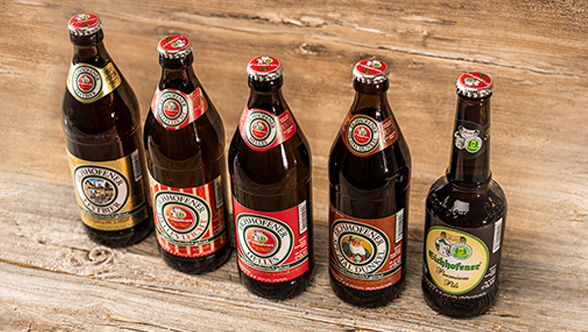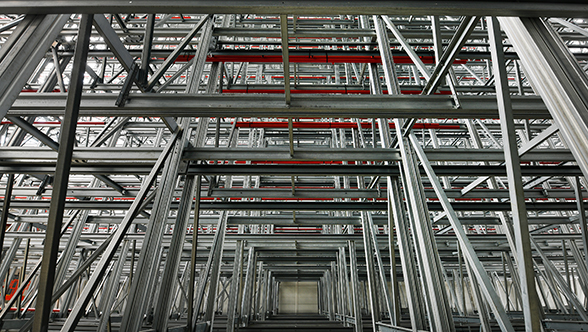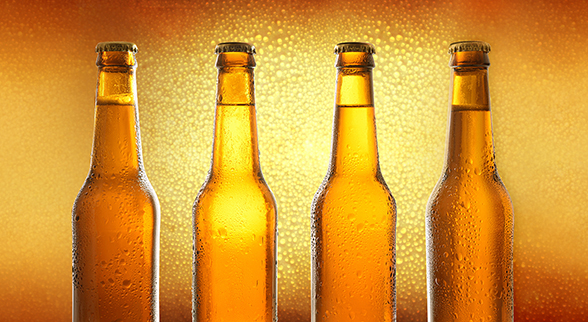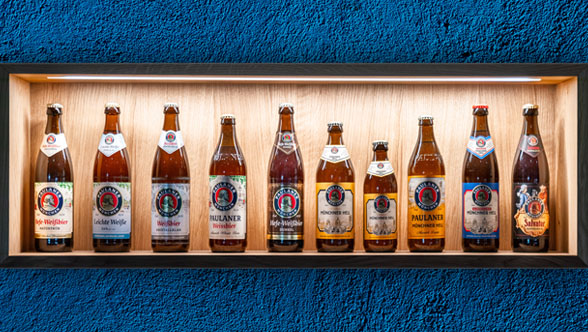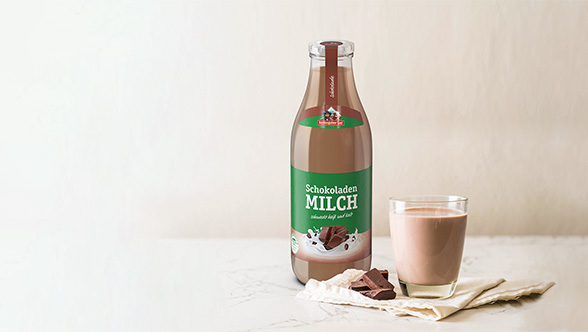When the innovation team at O-I had looked around for new decoration technologies, digital direct printing soon emerged as a promising candidate for meeting and mastering these challenges. Not least because it enables the bottles’ decoration to be changed at the touch of a button, so that even tiny batches can be cost-efficiently produced. “We looked at several alternatives, and then came to the conclusion that Till’s technology was the most promising option for printing on glass,” says Melianthe Leeman. That the company was quite soon afterwards incorporated into the Krones Group as a wholly owned subsidiary under the name of Dekron was confirmation enough for O-I that they had backed the right horse. “For us, that was ultimately the guarantee that the project will have a long-term future. Because instead of a start-up we now had a large corporation on our side,” explains Melianthe Leeman. “What’s more, of course, we had long since been familiar with Krones AG, and knew about its good reputation on the market.”
